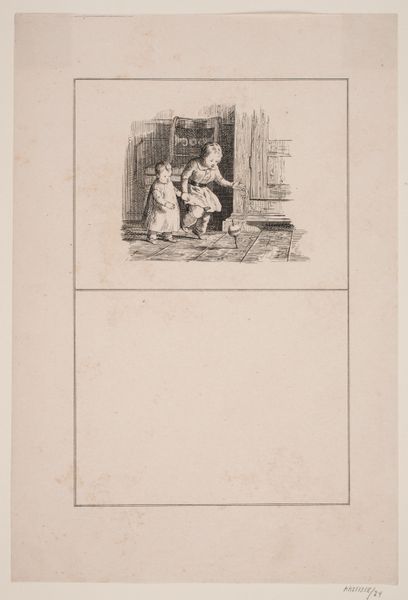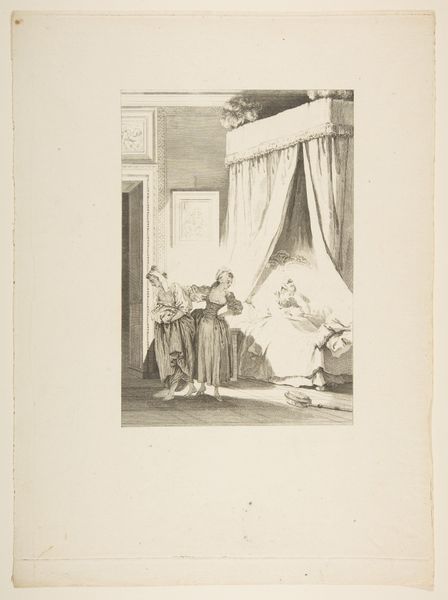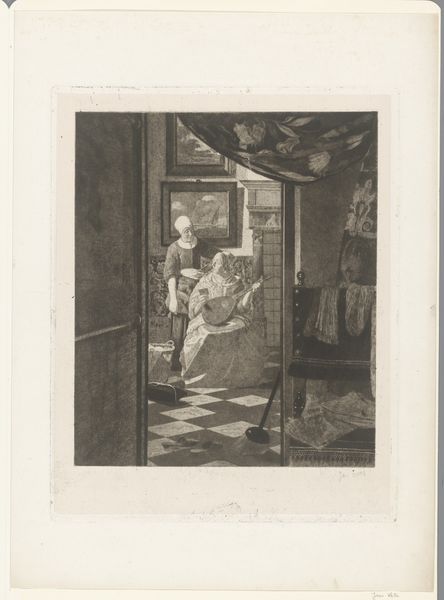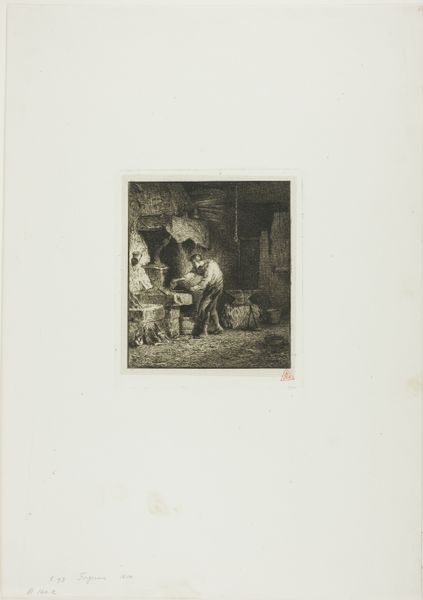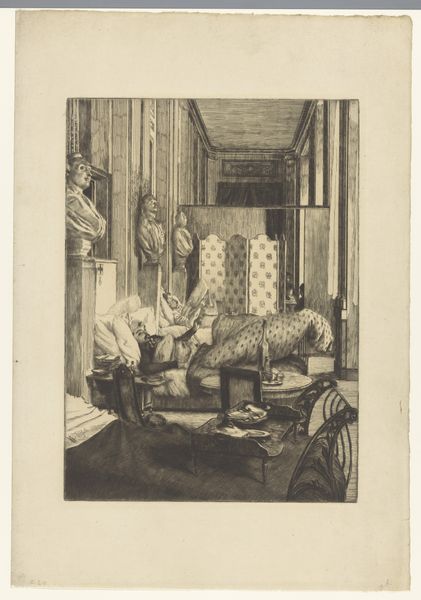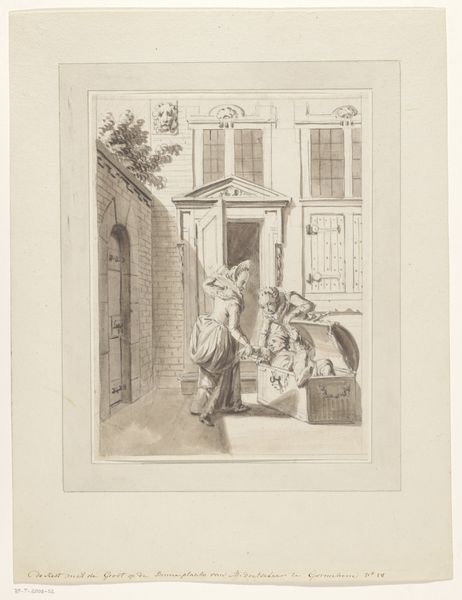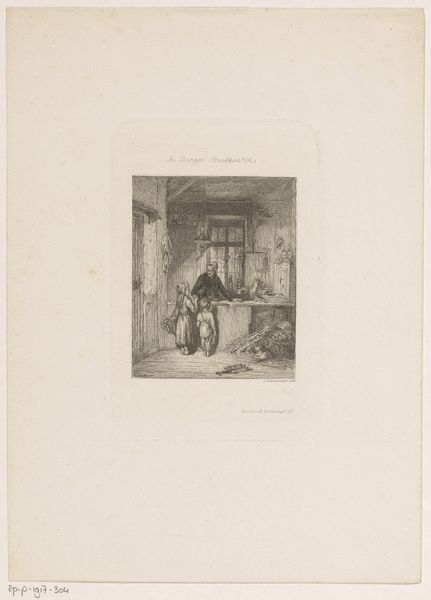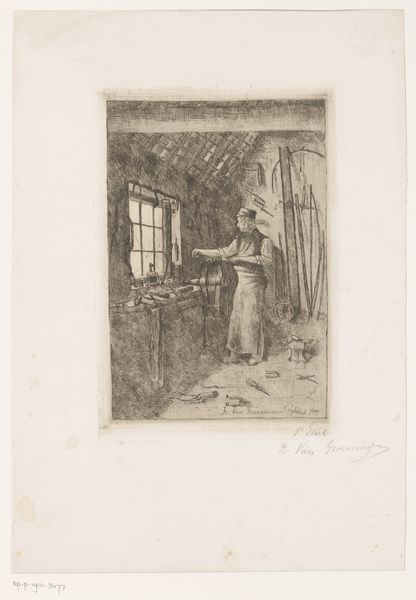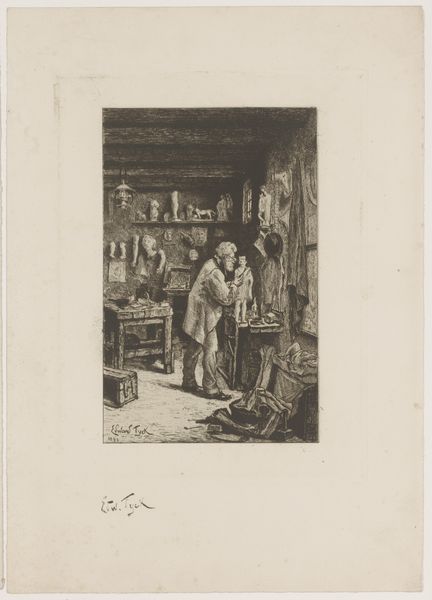
Le Muletier, from "Contes et nouvelles en vers par Jean de La Fontaine. A Paris, de l'imprimerie de P. Didot, l'an III de la République, 1795" 1790 - 1800
0:00
0:00
Dimensions: Sheet: 12 7/8 × 9 15/16 in. (32.7 × 25.3 cm) Plate: 12 1/2 × 9 9/16 in. (31.7 × 24.3 cm)
Copyright: Public Domain
This print, Le Muletier, was made in Paris in 1795 by Jean-Honoré Fragonard, as an illustration for a book of poems by La Fontaine. It's made using etching, a printmaking technique that relies on the corrosive power of acid to create lines in a metal plate, which is then inked and printed. The real artistry is in the skillful manipulation of light and shadow made possible by this technique. Look closely, and you can see how Fragonard used a variety of line weights and densities to create a sense of depth and volume. The scene depicts a story of intimacy in what seems to be a mule driver's home. The etching process, though indirect, allowed Fragonard to retain a remarkable spontaneity and freedom of line, mirroring the intimate and informal setting. This print exemplifies the convergence of fine art and craft, where technical skill serves the purpose of storytelling and aesthetic expression. By understanding the materials and processes involved, we gain a deeper appreciation for the artistic vision and the cultural context in which it was created.
Comments
No comments
Be the first to comment and join the conversation on the ultimate creative platform.
